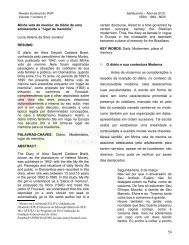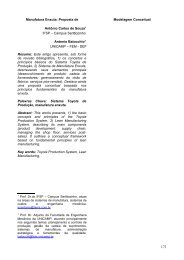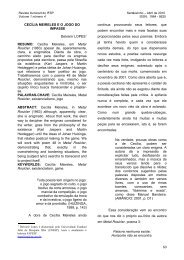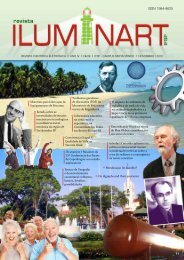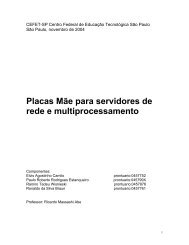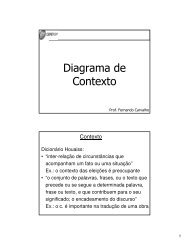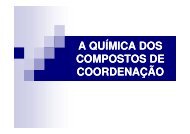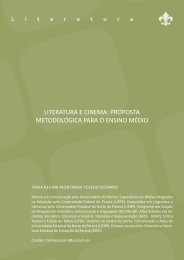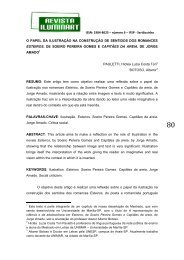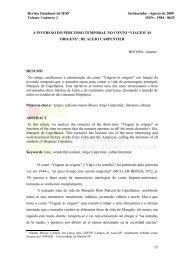Página 97
Página 97
Página 97
You also want an ePaper? Increase the reach of your titles
YUMPU automatically turns print PDFs into web optimized ePapers that Google loves.
1. Introduction<br />
ISSN: 1984 – 8625 – número 7 – IFSP - Sertãozinho - 2011<br />
Tournaments are for sure the most well-studied class of digraphs.<br />
There are hundreds of research papers written on this subject. In this<br />
paper we present the concepts of coned and non-coned cycles, which<br />
seem to provide a new and efficient instrument to study tournaments,<br />
specially the hamiltonian ones (which the majority of them). These<br />
concepts came up in a natural way in the development of the Regular<br />
Homotopy Theory for digraphs. In the case of tournaments, as we<br />
intend to show here, the concept of non-coned cycle leads to some very<br />
interesting and important results.<br />
In section 2 we present the basic definitions, introducing the<br />
notation and stating some basic results about digraphs.<br />
In section 3 we recall some of the main concepts and results<br />
of the regular homotopy for digraphs as it was introduced by Burzio,<br />
Demaria and Garbaccio-Bogin (see [4], [6], and [12]).<br />
In section 4 we define the concepts of coned and non-coned cycle,<br />
giving their motivation in the context of regular homotopy theory.<br />
In section 5 we show how the concept of coned cycle can be<br />
used in several situations if one is interested in classification results<br />
or in structural characterizations of certain families of tournaments<br />
and also, as it has been seen lately, in those situations in which<br />
tournaments are associated to complex full flag manifolds in order to<br />
stablish if an invariant almost complex structure on them admits or<br />
not certain type of invariant metrics. .<br />
2. Preliminaries<br />
In this section we give some definitions and recall some well<br />
known results on digraphs.<br />
Definition 2.1 Let V be a finite non-empty set and E a set of<br />
ordered pairs (u, v) ∈ V × V , such that u = v. We call the pair<br />
D = (V, E) a directed graph or digraph. The elements of V are the<br />
vertices of D, the cardinality of V the order of D, and the elements of<br />
E the arcs of D. Moreover we write u → v instead of (u, v), and we<br />
<strong>Página</strong><br />
98




